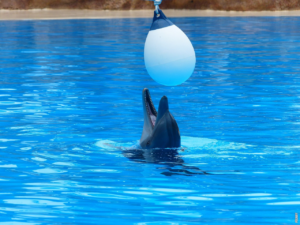Exploring the Underwater Breathing Techniques
Have you ever wondered how whales and dolphins are able to breathe underwater? These magnificent creatures have evolved remarkable adaptations that allow them to thrive in their marine environment. Let’s dive into the fascinating world of these marine mammals and uncover the secrets behind their unique respiratory systems.
The Art of Holding Their Breath
Unlike humans, whales and dolphins cannot breathe through their mouths. Instead, they rely on a blowhole located on top of their heads. This ingenious adaptation enables them to take in air without fully exposing their bodies to the surface. By closing their blowhole when submerged, they prevent water from entering their respiratory system.
The Power of the Lungs
Whales and dolphins possess highly efficient lungs that allow them to absorb a significant amount of oxygen with each breath. Their lungs are capable of collapsing and expanding rapidly, enabling them to quickly exchange gases even during short visits to the surface.
Diving to Great Depths
These incredible marine mammals are known for their impressive diving abilities. But how do they manage to stay underwater for extended periods? The secret lies in their ability to conserve oxygen. Before a deep dive, whales and dolphins take a series of quick, shallow breaths, effectively expelling excess carbon dioxide from their bodies. This process, known as the ‘pre-dive response,’ allows them to store oxygen in their muscles and organs, enabling them to withstand the pressures of deep dives.
The Miraculous Oxygen Storage
Whales and dolphins have the remarkable ability to selectively distribute oxygen to vital organs while diving. They can redirect blood flow away from non-essential organs, such as the digestive system, and prioritize oxygen delivery to the brain and heart. Additionally, these marine mammals have larger blood volumes and more red blood cells than land-based mammals, further enhancing their oxygen-carrying capacity.
Post
Post
Sonar: The Ultimate Survival Tool
One of the most fascinating aspects of whales and dolphins is their exceptional echolocation ability, which enables them to navigate, communicate, and locate prey in the vast ocean. But how does this relate to breathing? Well, echolocation is a vital tool for these marine mammals to find their way back to the surface for a breath of fresh air. It allows them to map their surroundings and locate the perfect spot to resurface, ensuring a seamless transition between the underwater and aerial environments.
The Circle of Life
Whales and dolphins are conscious breathers, which means that they need to be actively aware of their breathing process. This unique characteristic becomes especially crucial during sleep. To prevent drowning, they have the ability to rest one half of their brain while the other remains awake and in control of breathing. This incredible adaptation ensures their survival while maintaining necessary periods of rest.
A Symphony of Adaptations
The respiratory systems of whales and dolphins are a symphony of adaptations that perfectly align with their marine lifestyle. From their blowholes to their efficient lungs and oxygen storage capabilities, these incredible creatures have evolved to conquer the challenges of underwater respiration. The next time you see a whale or dolphin gracefully emerge from the depths, take a moment to appreciate the wonders of their breathtaking abilities.



